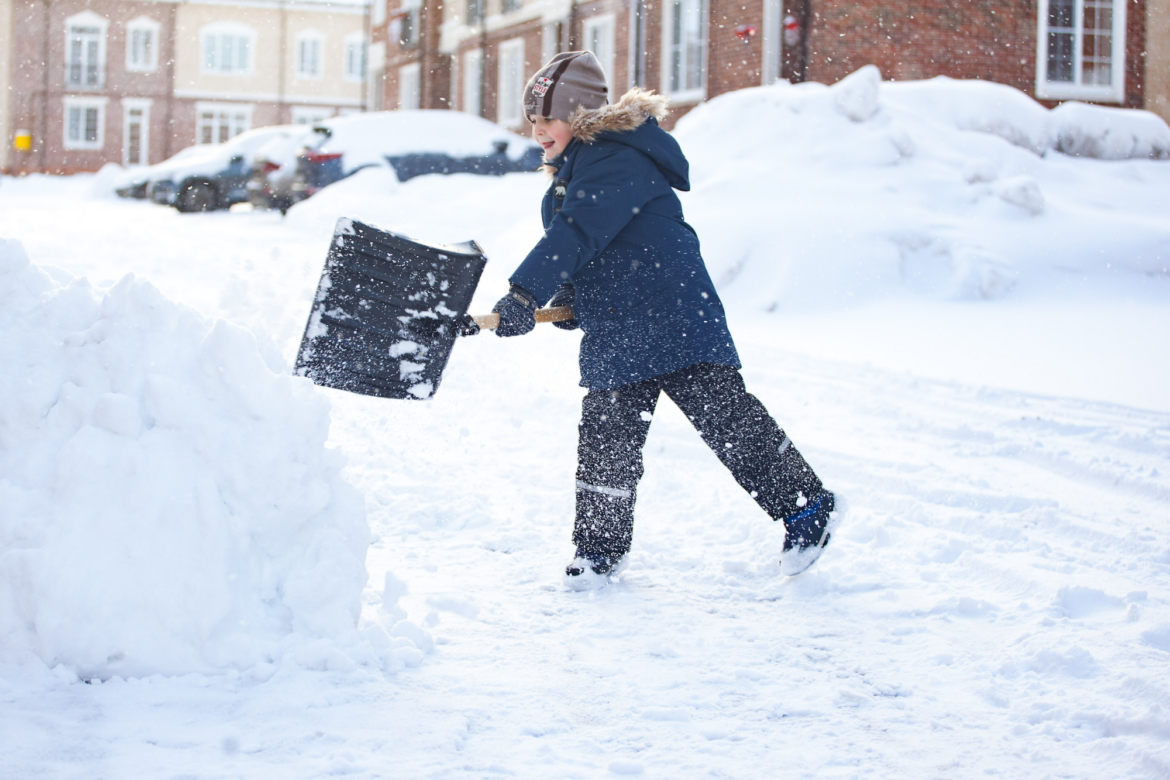Ways to Reduce Injury Risk with Snow Shoveling
Often with snow shoveling season comes an increase in new injuries or an exacerbation of old injuries. Most often, injuries can occur in the low back, shoulders, or legs due to the body not being prepared for the task at hand. This article will highlight some useful tips and techniques to help reduce the risk of injury this winter. Don’t get hurt shoveling this season.
5 Exercises to help in preparation
1. Deadlifts: This exercise focuses on strengthening to posterior chain (refers to the muscles on the back of the spine and legs) which are extremely important with shoveling.
2. Squats: This exercise can be used to strengthen the front and inner portion of the legs (quadriceps, adductors) which are useful to help lift when shoveling to reduce stress throughout the low back.
3. Bent over rows: Rows, particularly when done in a forward bent position will be helpful to strengthen the upper back and shoulders which are often stressed with the shoveling motion.
4. Front and side shoulder raises: The focus of this exercise is again to strengthen the shoulders. Additional tip: When doing this exercise it is important and beneficial to keep the core braced to protect the low back.
5. Core strengthening: examples include but are not limited to planks, supine marches, bridges, and hollow holds. The core should be engaged when shoveling to help protect the low and mid back from injury- and pain-free core strengthening will be beneficial to reduce injury risk.
Techniques to incorporate when shoveling
- Warm-up: Shoveling can be hard work on the body and as with any aerobic activity, a warm-up is important. A 5-10 minute light aerobic or dynamic warmup will be beneficial to prepare muscles for the activity ahead.
- Have a good shovel: Ideally choosing a lightweight shovel with a bent shaft tend to put the least stress throughout the low back.
- Pace yourself and take breaks as needed: Know your body’s limits. It is important to take intermittent breaks to allow your body to recover and rest as needed
- Drink water/stay hydrated: Make sure to drink water as needed to avoid overheating and to give your body a break as needed.
Stretching after shoveling
It is important to take time to stretch after you are done shoveling while the muscles are still warm. Do not stretch to pain just to light to moderate resistance and hold from 30-60 seconds. There should be no pain, just resistance, and a gentle stretch. Muscle groups to make sure to incorporate include but are not limited to: hamstrings, quadriceps, calf muscles, and shoulders. Additionally, performing some stretches to help reduce tension throughout the low back is also beneficial. Some examples include child’s pose, cat camel, and reach-throughs. Check out some different stretches to perform after shoveling.
Overall, I hope this article gives some insight into the importance of preventatively working to reduce injury risk leading up to shoveling and both during and after. I hope these tips help you to have a safe and pain-free shoveling season. For more help on staying safe this winter season, contact us here. Happy shoveling!

